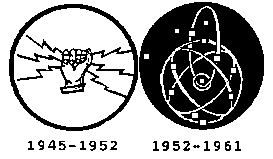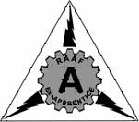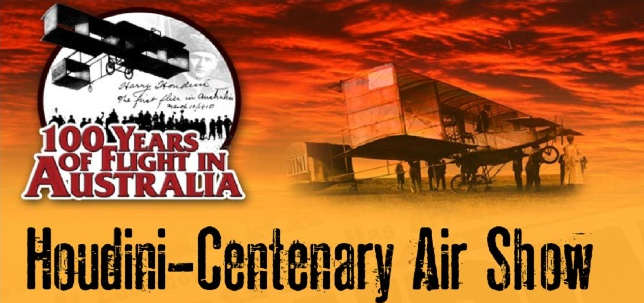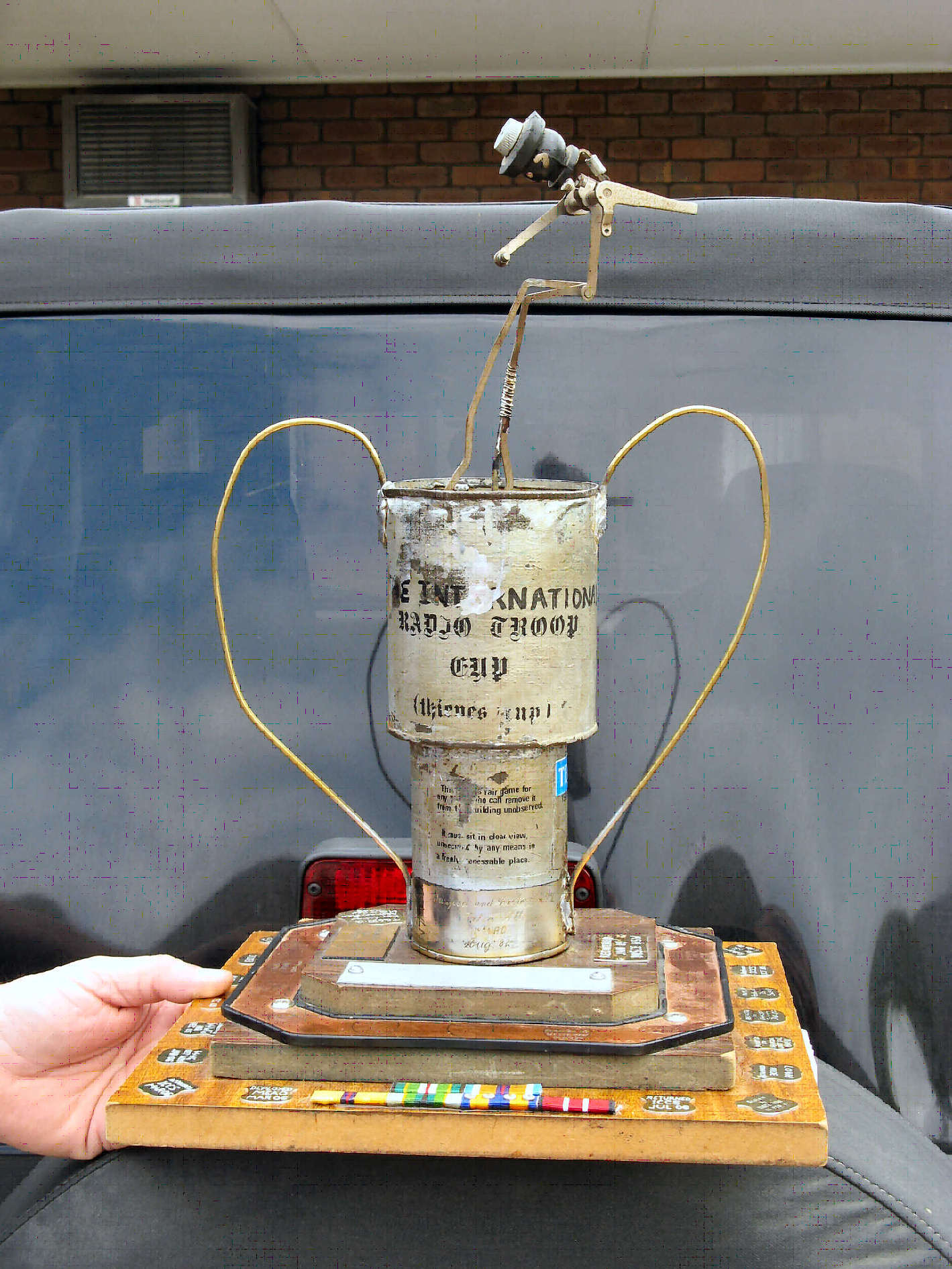|
Radschool Association Magazine - Vol 30 Page 20 |
|
Privacy Policy | Editorial Policy | Join the Association | List of Members | Contact us | Index | Links | Print this page |
|
News and Reunions!
|
|
|
|
9TAC Reunion
January 2010 marks the 20th Anniversary that 9TAC was formed and commenced training.
Past and present members of 9TAC, Apprentice Squadron Staff and RAD School Instructors of the 1990-1992 era are invited to attend a 9TAC, 20 Year Reunion at the Kent Hotel, 370 Rathdowney St, North Carlton, Melbourne on Saturday 13th March 2010. Kick off is 6.30pm for Dinner and Drinks.
Click here for the invitation.
RSVP 22nd January 2010.
For further information, Email Craig Dixon or ring on 0438 649 464
|
|
Don't sweat the petty things and don't pet the sweaty things.
|
|
Brief History of the Radio Appy Scheme.
Those who passed
this common course continued with the
Diploma course for a further 2½ years followed by one year at the RAAF
School of Radio (RADS) which was then located at Ballarat in Victoria. On
successfully completing this four-year training period, apprentices were
awarded their Associateship Diplomas. Some were selected for a further
years study at RMIT to qualify for a Fellowship Diploma, after which they
were commissioned. Those apprentices who failed the six month common
course were streamed into RMIT’s Radio and Electronics Technician
Certificate course. This was an 18 month course, and those who passed did
a further eight months training in applied electronics at RADS before
finally graduating.
|
|
One tequila, two tequila, three tequila, floor.
|
|
Pandanus Park.
Mark Fielding has just finished designing and posting the website for Pandanus Park on Cape York. The web address is www.pandanusparkinc.com which does not yet show up on search engines but will eventually. Please take the time to have a look at the site.
|
|
If man evolved from monkeys and apes, why are there still monkeys and apes?
|
Houdini - Centenary of Australian Flight
On 18th March 1910, Harry Houdini made the first officially recorded
controlled powered flight in Australia at
Diggers Rest, Victoria. The "Houdini - Centenary Air Show" is being
held on Saturday 20th March 2010 to commemorate this significant
achievement in Australia's aviation history.
Flying displays will showcase aircraft that have played a significant role in Australian skies over the last 100 years and will feature solo displays, formations flying and aerobatics. On the ground you will be able to walk around beautifully restored aircraft and meet the pilots who fly them, look at vintage and rally cars, while the kids will be entertained with aircraft making and other activities.
Come and see the displays and meet the people who make aviation what it is today, and be a part of Australia's aviation history as it enters the next 100 years.
More information HERE
CANNON BALLS!!! DID YOU KNOW THIS?
It was necessary to keep a good supply of cannon balls near the cannon on old war ships. But how to prevent them from rolling about the deck was the problem. The storage method devised was to stack them as a square based pyramid, with one ball on top, resting on four, resting on nine, which rested on sixteen.
Thus, a supply of 30 cannon balls could be stacked in a small area right next to the cannon. There was only one problem -- how to prevent the bottom layer from sliding/rolling from under the others.
The solution was a metal plate with 16 round indentations, called, for reasons unknown, a Monkey. But if this plate were made of iron, the iron balls would quickly rust to it. The solution to the rusting problem was to make them of brass - hence, Brass Monkeys.
Few people realize that brass contracts much more and much faster than iron when chilled, consequently, when the temperature dropped too far, the brass indentations would shrink so much that the iron cannon balls would come right off the monkey. (The CTE of brass is 20.3 and the CTE of Iron is 11.8)
Thus, it was quite literally, cold enough to freeze the balls off a brass monkey.
|
|
What if there were no hypothetical questions?
|
|
|
|
Albury get together.
Neil Hunter says the Telstech people who didn’t travel to Albury for the recent get together sure missed a most enjoyable weekend! He says “The total count of attendees was 41. The venue was great and the food outstanding - here is what you missed:
Now where else could you get a spread like that for $30?
For those who don't know the story, it came originally from the Army at Bringelly, following a chequered career; the RAAF took it over on the opening of RAAFTUS. The cup is at all times to be on full view, and the aim of the exercise is to 'flog' it without being caught. It currently carries its own set of campaign ribbons, having been to Timor and the Middle East, and engraved shields, showing where it has been.
Soon there will be the full story published on the Telstechs web site”.
Radio Museum.
If you’re interested in old things radio, and you live in the Sydney area, then you should take yourself up to Kurrajong to visit the Radio Museum as it’s definitely worth a visit.
The museum is open between 10.00am and 5.00pm most weekends and the entry fee is $10 per adult and $5 for billy lids. Before you head off, it’s probably worth phoning to make sure it’s open – the number is 02 4573 0601.
Their web site is http://www.vk2bv.org/museum/
The museum is a privately funded operation displaying many aspects of radio and is run by Ian O'Toole.
There are lots of sounds to listen to, Morse Keys and buzzers just waiting to be warmed by fingers, tele-printers to be tried and several hundred radios and related items to be looked at.
|
|
Is there another word for synonym?
|
|
Back Go to page: 1 2 3 4 5 6 7 8 9 10 11 12 13 14 15 16 17 18 19 20 Back to Start
|


 The
Radio Apprentice School was formed at RAAF Frognall in December 1947. No 1
Course (comprising 16 trainees) began training in the first week of
February 1948. Formal radio training was undertaken by the Royal Melbourne
Institute of Technology (RMIT) and this arrangement continued for the next
26 years. From 1948 until 1960 each new intake of Radio Apprentices
undertook a common course; this was the first six months of RMITs Associateship Diploma in Communication Engineering.
The
Radio Apprentice School was formed at RAAF Frognall in December 1947. No 1
Course (comprising 16 trainees) began training in the first week of
February 1948. Formal radio training was undertaken by the Royal Melbourne
Institute of Technology (RMIT) and this arrangement continued for the next
26 years. From 1948 until 1960 each new intake of Radio Apprentices
undertook a common course; this was the first six months of RMITs Associateship Diploma in Communication Engineering. 




